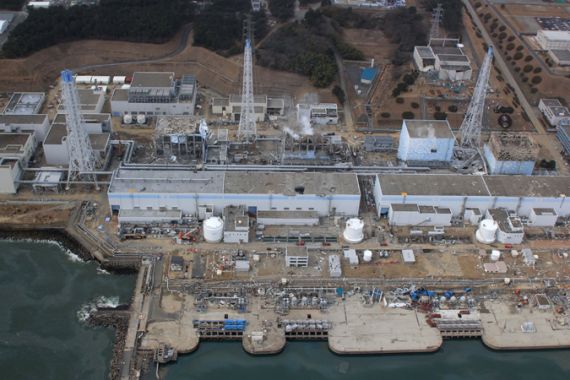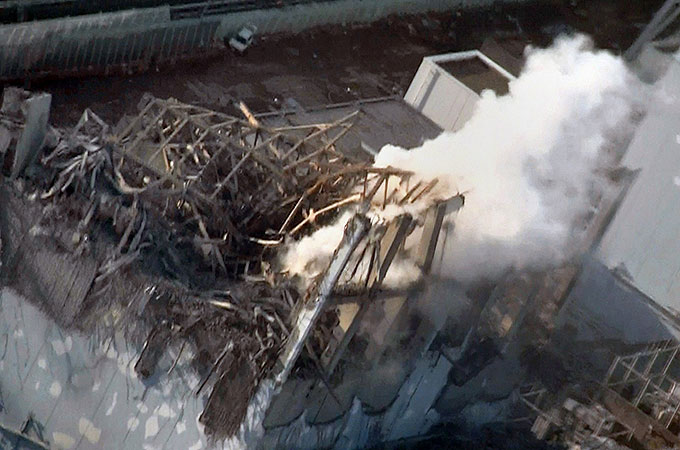Tepco confirms extra reactor meltdowns
Operator of Fukushima Daiichi plant says fuel rods at three of the plant’s six reactors melted early in the crisis.

 |
| The Japanese military has used helicopters to dump water onto the plant in a bid to douse fuel rods [AFP] |
Tokyo Electric Power Co has confirmed the meltdown of two extra fuel rods in reactors at its damaged Fukushima nuclear power plant.
Tepco said on Tuesday that meltdowns of the rods at the reactors at the Fukushima Daiichi plant occurred early in the crisis, triggered by the March 11 earthquake and tsunami.
Keep reading
list of 4 itemsAfter the Hurricane
World’s coral reefs face global bleaching crisis
Why is Germany maintaining economic ties with China?
The government and outside experts had said previously that fuel rods at three of the plant’s six reactors had likely melted, but the utility, also known as Tepco, had only confirmed a meltdown at the No. 1 reactor.
Tepco officials said a review since early May of data from the plant concluded the same happened to reactors No. 2 and 3.
The preliminary finding, which was reported to Japan’s nuclear safety agency, represents part of an initial effort to explain how events at Fukushima spiralled out of control early in the crisis.
Also on Tuesday, the government appointed Yotaro Hatamura, a Tokyo University professor of engineering who has studied how complex systems and designs fail, to head a committee that will investigate the cause and handling of the nuclear crisis.
The moves came as a team of investigators from the International Atomic Energy Agency began a two-week visit to Japan to prepare a report on the accident to be submitted to the United Nations agency in June.
Panic fear
Some analysts said the delay in confirming the meltdowns at Fukushima suggested the utility feared touching off a panic by disclosing the severity of the accident earlier.
“Now people are used to the situation. Nothing is resolved, but normal business has resumed in places like Tokyo,” Koichi Nakano, a political science professor at Tokyo’s Sophia University, said.
Nakano said that by confirming the meltdowns now, Tepco may be hoping the news will have less impact. The word “meltdown” has such a strong connotation that when the situation was more uncertain more people would likely have fled Tokyo, he said.
Engineers are battling to plug radiation leaks and bring the plant, 240 km northeast of Tokyo, under control more than two months after the 9.0 magnitude earthquake and tsunami that devastated a vast swathe of Japan’s northeast coastline and killed thousands.
The disaster has triggered a drop of more than 80 percent in Tepco’s share price and forced the company to seek government aid as it faces compensation liabilities that some analysts say could top $100 bn.
Banri Kaieda, the Japanese trade minister, said the government would approve the formation of a committee later on Tuesday to ensure Tepco followed through with restructuring plans.
Despite a steady flow of information on how the clean-up is proceeding – Tepco and the government’s nuclear watchdog hold news conferences twice a day on most week days – the authorities have faced criticism for what some have said is a lack of timely disclosure.
“I am very sorry that the public is mistrustful of the various disclosures made by the government on the accident,” Naoto Kan, the prime minister, said in parliament on Monday.